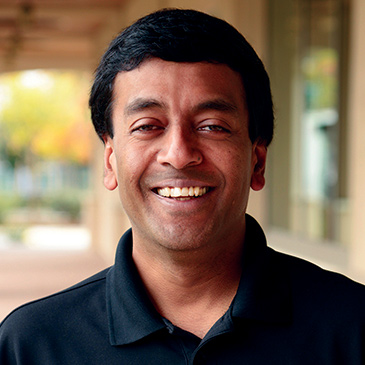
Visionary Data Wrangler
Prolific prof leads research in a burgeoning field where finance and big data intersect.
When Sanjiv Das, William and Janice Terry Professor of Finance and Business Analytics, talks about crossroads in the world of finance and data science, he is set on sharing his message far and wide.
Since he joined the Leavey School of Business faculty in 2000, the professor of finance and now business analytics has delivered hundreds of research-driven conference presentations, workshops, and seminars.

And when Das isn’t zoned in on his current research interests—such as the modeling of default risk, machine learning, social networks, derivatives pricing models, portfolio theory, and venture capital—he consults internationally, writes and publishes prolifically, and wins numerous awards for his research and teaching.
One might wonder if the man ever sleeps.
“Data is a huge career opportunity,” said Das. “As the amount of data we create each day continues to grow, so too does the need for talented individuals who can make sense of it—and right now there are not enough candidates.” Das plays a big part in turning that around as co-founder of Leavey’s new business analytics program.
Here in the epicenter of Silicon Valley, his data science students are absorbed in complex data wrangling, such as analyzing police and crime statistics for San Jose’s mayor’s office and working with United Way to gain insights into community needs through data analytics research.
As an endowed professor, Das is able to expand his areas of research and teaching. Funding covers new research, travel, and other expenditures, and directly supports Das with the impact he is having beyond the boundaries of academia.
This year, Das took first place in MIT’s first crowd-sourced competition with his mathematical methodology that takes data from all of the nation’s banks and comes up with a single number that reflects the health of the country’s banking system.
Without parallel, Das has made serious inroads when it comes to analyzing financial risk—something that has the potential to change the entire landscape of business management and economic policy analysis.